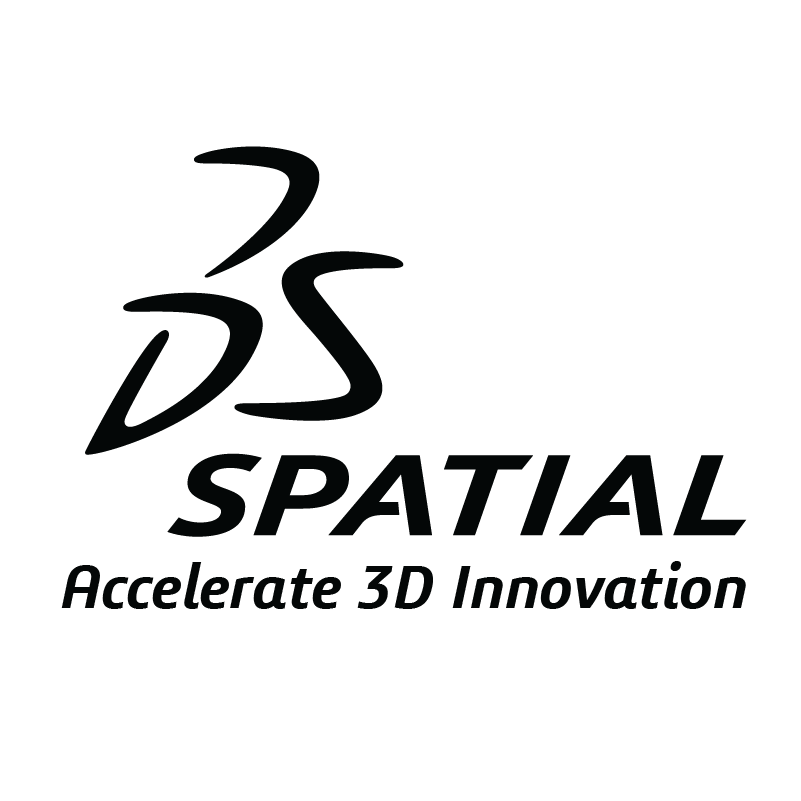Spatial Announces the Release of 2019 1.0
Driving improvements across the Spatial product offering, enhancing the workflows of targeted industries
BROOMFIELD, Colo., November 13, 2018 — Spatial Corp, the leading provider of 3D software development toolkits for design, manufacturing, and engineering solutions, and a subsidiary of Dassault Systèmes, announces today the production release of 2019 1.0, delivering improved workflows, performance and functionality improvements, as well as enhanced interoperability. This release also delivers targeted solutions supporting building information modeling (BIM) applications.
BIM SUITE
This release includes the Spatial BIM Suite, composed of interoperability, 3D modeling and visualization solutions. The BIM Suite allows solution developers to solve the data chaos in the construction industry that limits BIM adoption and leads to significant costs for end users including wasted time coordinating manual processes, material waste, plus change order and litigation expenses. For more details, see the focused companion release, “Spatial Announces the Availability of its BIM Suite.”
3D INTEROP
In addition to enhancements specific to the BIM Suite, release 2019 1.0 includes several enhancements for 3D InterOp:
- Binaries are now built natively on Linux, allowing developers to achieve market-leading interoperability with applications running Linux, including cloud-based solutions.
- New support for Rhino and STEP AP 242 PMI enabling developers of mechanical CAD solutions to expand interoperability in their applications and workflows
- Improved support for the additive manufacturing industry with the addition of 3MF reader support.
- Improved interoperability and end user aesthetic experience, targeting the engineering and architectural domains, with support added for FBX, COLLADA/DAE, ZAE, and OBJ readers.
CGM CORE MODELER
To make input operations faster and more robust, CGM can now derive canonical information from B-splines, modifying the input body by examining the input faces. Any faces which are geometrically a plane, cylinder or torus are now identified and converted.
This release enhances CGM’s automatic feature detection and removal capabilities by now being able to detect pad and pocket direction. This new capability enables additional automation of downstream operations so that application developers and their users can improve ease of use and efficiency.
CGM POLYHEDRA
CGM Polyhedra users also see a number of benefits with this new release:
- Enhanced STL healing for self-intersecting, thin, overlapping and inverted polygons for polyhedral data. This enhancement improves automation of healing workflows and additive manufacturing results.
- New canonics-for-surfaces feature converts faces which are planes, cylinders or tori into CGM precise representations. This new capability not only enables new workflows for polygonal data, but can also improve performance for operations involving these faces.
- New operator to create polyhedral body from exact inputs allowing for precise representations to be used to create polygonal representations for workflows using polyhedral data.
3D ACIS MODELER
Spatial continues to deliver Boolean performance improvements with this release, delivering several changes to the algorithm to increase performance, with significant gains for very large models. Moreover, Boolean robustness has been enhanced when splitting imported periodic faces.
Also included in this release are three improvements targeting enhancing customer workflows and productivity:
- Improved cellular topology performance via a new API to enhance the propagation of attributes.
- Enhanced ACIS checks to ensure that the models used are appropriately prepared for user workflows.
- Improved healing for tightening gaps to prevent disruptions resulting from imperfect models.
Local operators, sheet thicken and sheet extend, also saw improvements with this release.
HOOPS VISUALIZE
Web and mobile visualization can now be extended to augmented reality (AR) and virtual reality (VR) devices and workflows with this release. In addition to new AR/VR support, this release delivers the ability to provide photo-realistic 3D visualizations with a new physically based rendering capability.
With this release, applications running DirectX 11 on Windows can now query the host machine for the types of installed graphics cards, allowing an application to automatically select the card offering the best performance.
###
ABOUT SPATIAL
Spatial Corp, a Dassault Systèmes subsidiary, is the leading provider of 3D software development toolkits for technical applications across a broad range of industries. Spatial 3D modeling, 3D visualization, and CAD translation software development toolkits help application developers deliver market-leading products, maintain focus on core competencies, and reduce time-to-market. For over 30 years, Spatial’s 3D software development toolkits have been adopted by many of the world's most recognized software developers, manufacturers, research institutes, and universities. Headquartered in Broomfield, Colorado, Spatial has offices in the USA, Germany, Japan, China, and the United Kingdom. For more information, visit www.spatial.com.
Spatial Corp. Press Contact
Omar-Pierre Soubra
+1 720 445 6627
omar.soubra@3ds.com

